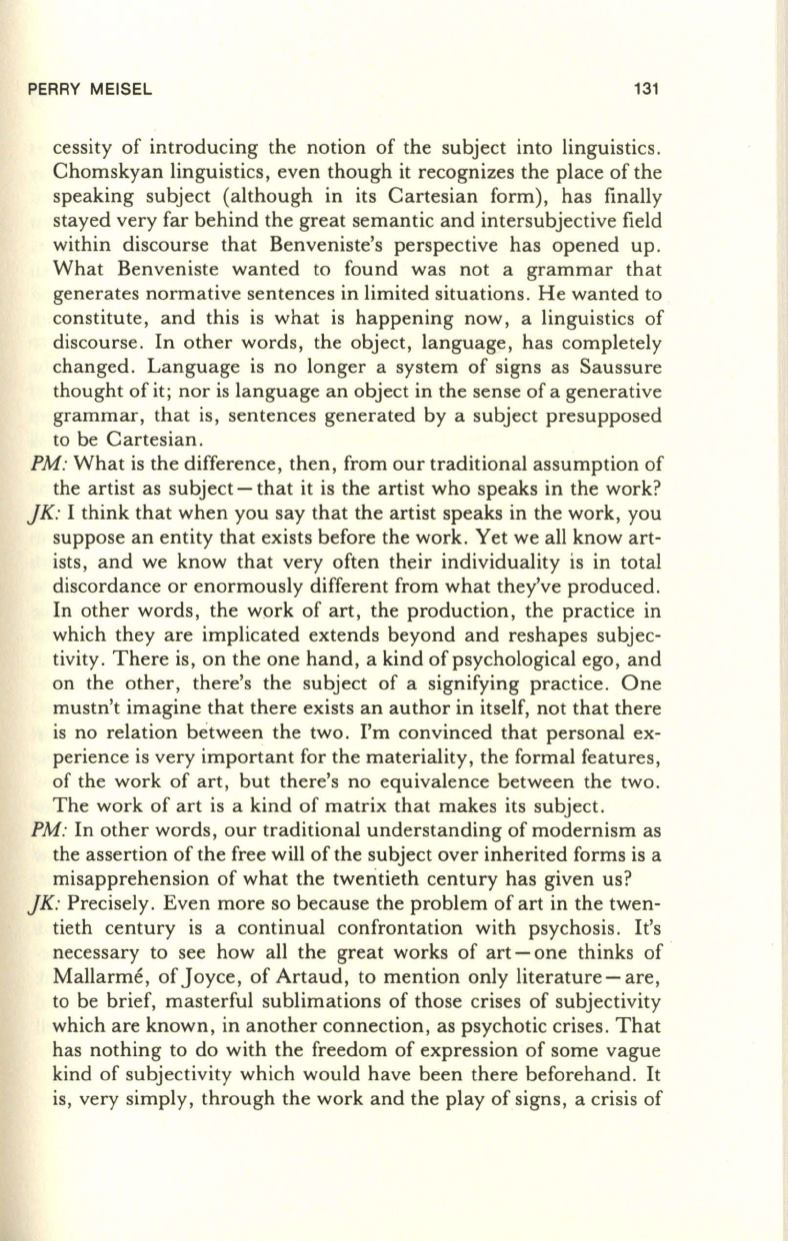
PERRY MEISEL
131
cessity of introducing the notion of the subject into linguistics.
Chomskyan linguistics, even though it recognizes the place of the
speaking subject (although in its Cartesian form), has finally
stayed very far behind the great semantic and intersubjective field
within discourse that Benveniste's perspective has opened up .
What Benveniste wanted to found was not a grammar that
generates normative sentences in limited situations . He wanted to
constitute, and this is what is happening now, a linguistics of
discourse. In other words, the object, language, has completely
changed. Language is no longer a system of signs as Saussure
thought of it; nor is language an object in the sense of a generative
grammar, that is, sentences generated by a subject presupposed
to be Cartesian .
PM:
What is the difference, then, from our traditional assumption of
the artist as subject - that it is the artist who speaks in the work?
JK:
I think that when you say that the artist speaks in the work, you
suppose an entity that exists before the work. Yet we all know art–
ists, and we know that very often their individuality is in total
discordance or enormously different from what they've produced.
In other words, the work of art, the production, the practice in
which they are implicated extends beyond and reshapes subjec–
tivity. There is, on the one hand, a kind of psychological ego, and
on the other, there's the subject of a signifying practice. One
mustn't imagine that there exists an author in itself, not that there
is no relation between the two. I'm convinced that personal ex–
perience is very important for the materiality, the formal features,
of the work of art, but there's no equivalence between the two.
The work of art is a kind of matrix that makes its subject.
PM:
In other words, our traditional understanding of modernism as
the assertion of the free will of the subject over inherited forms is a
misapprehension of what the twentieth century has given us?
JK:
Precisely. Even more so because the problem of art in the twen–
tieth century is a continual confrontation with psychosis. It's
necessary to see how all the great works of art - one thinks of ·
Mallarme, of Joyce, of Artaud, to mention only literature-are,
to be brief, masterful sublimations of those crises of subjectivity
which are known, in another connection, as psychotic crises. That
has nothing to do with the freedom of expression of some vague
kind of subjectivity which would have been there beforehand. It
is, very simply, through the work and the play of signs, a crisis of


